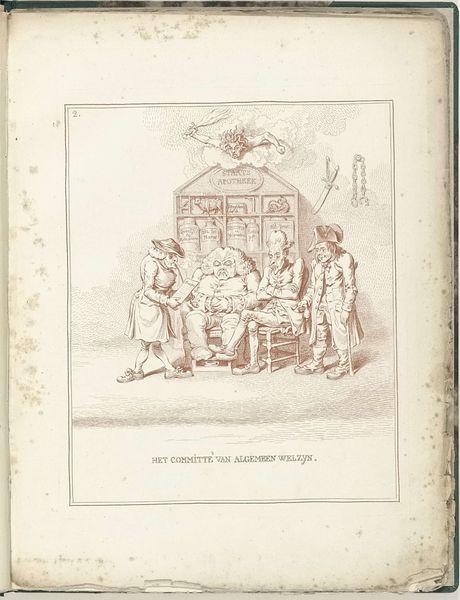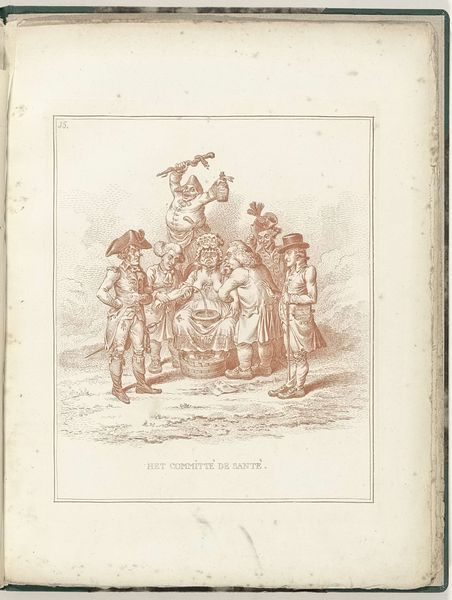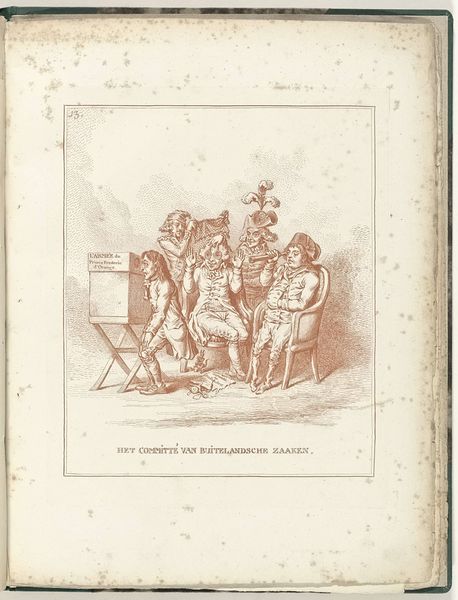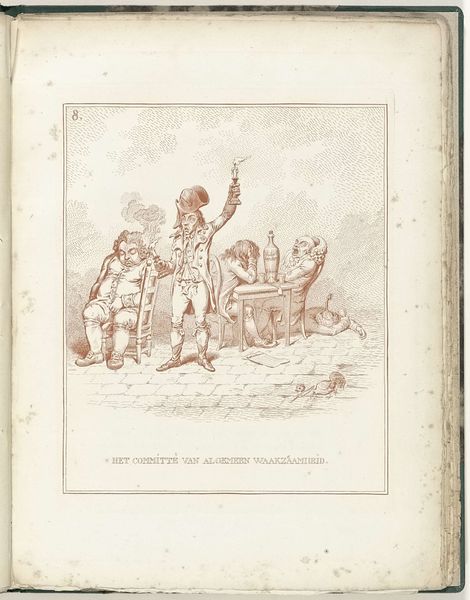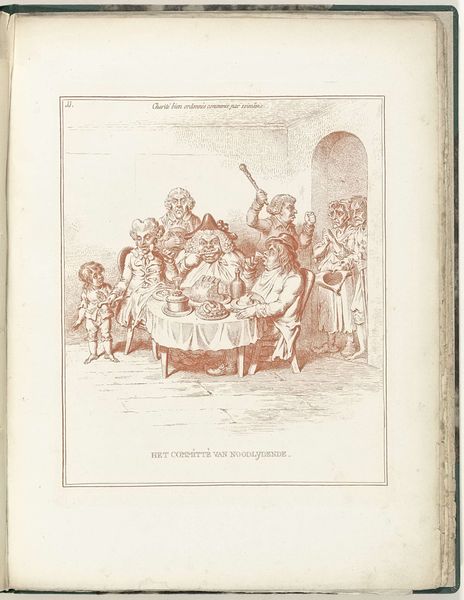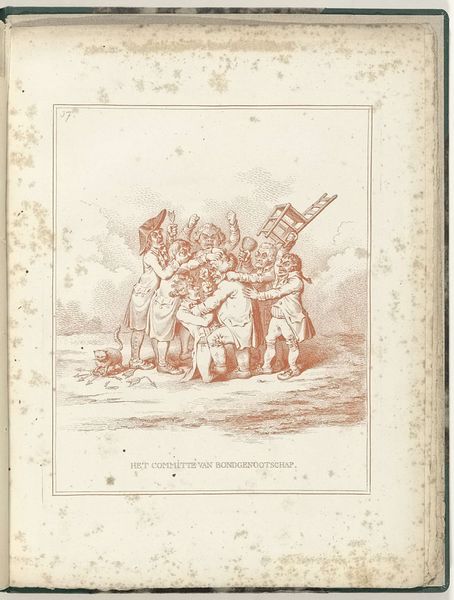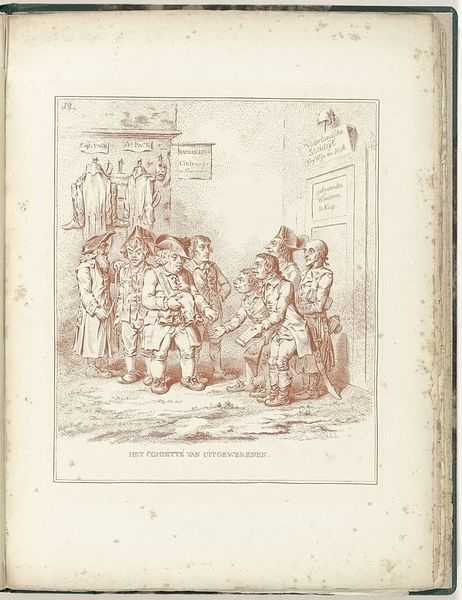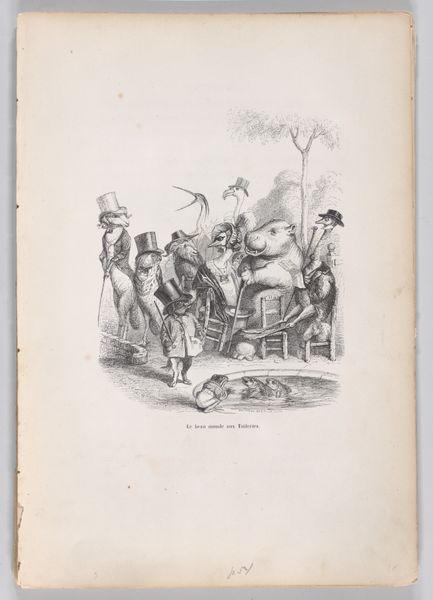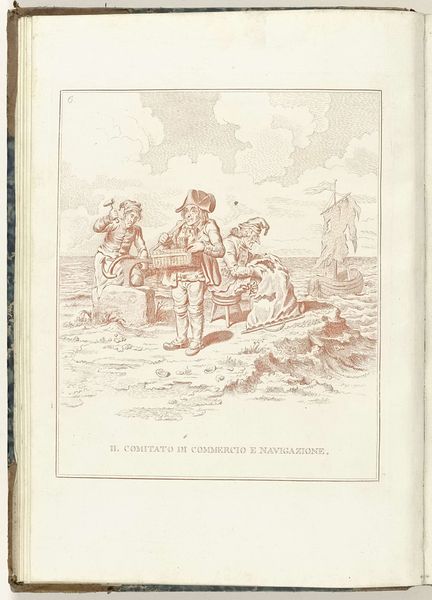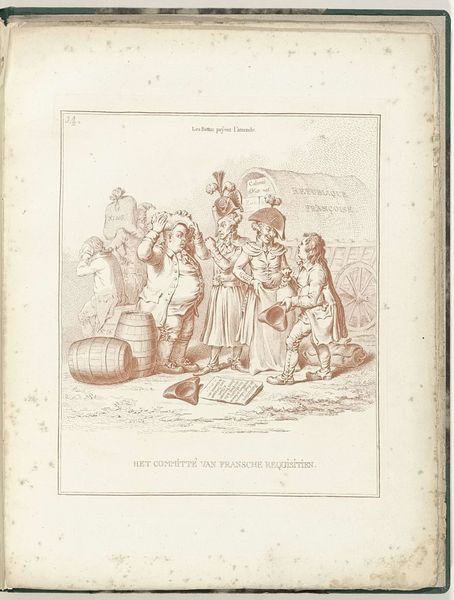
drawing, print, ink, engraving
#
drawing
#
neoclacissism
# print
#
pen sketch
#
caricature
#
ink
#
genre-painting
#
engraving
Dimensions: height 271 mm, width 220 mm
Copyright: Rijks Museum: Open Domain
Curator: This is an engraving from 1799, titled "Comité van Financiën, 1795," or "The Finance Committee, 1795," attributed to an anonymous artist. The medium involves ink and is a detailed print. What catches your eye first about it? Editor: Immediately, the theatricality. The exaggerated expressions, the almost cartoonish rendering of the figures, give it a feeling of political farce. Curator: Exactly! It's pure caricature, meant to satirize the financial situation of the time. Think about the social and political context; France was in turmoil post-revolution, facing economic instability. This print likely critiqued the perceived ineptitude or corruption within the finance committee. Editor: I see it now. Notice how the money chest overflows with documents and tools. These documents signal economic policies or perhaps records, while the tools nearby represent the laboring class, burdened by these decisions. This contrast emphasizes the separation between the ruling body and the working person. Curator: Precisely. There’s a very loaded debate there about labor, materials, and of course the social commentary in play here. Are the people depicted actively benefiting, or is that precarious tower of bags of coins about to crush them? Are those officials literally "sitting" on capital? Editor: The bag of “paghero,” meaning they "will pay" stacked above the “assignats” suggests undelivered promises. It certainly amplifies the anxiety around public credit during that moment. And that precarious stacking is about to topple and, quite possibly, bury one of the figures! Curator: And look at the artist's technical skill in engraving; the use of line weight to create depth and shadow. This method draws attention to key elements, guiding our interpretation. Think about the labour it took to produce the detailed imagery on those coins represented in miniature! Editor: It's quite effective. The material of the engraving allows for reproduction, making it accessible to a broader public, intensifying its sociopolitical impact. It shows a society struggling with inequity that resonates through its artistry. Curator: Definitely! Understanding this work necessitates analyzing the printmaking process, as well as investigating France at the close of the 18th century. A fascinating commentary all around. Editor: Agreed, an exploration of material history really enhances its contemporary political interpretation. It underscores the importance of economic history in visual art!
Comments
No comments
Be the first to comment and join the conversation on the ultimate creative platform.

